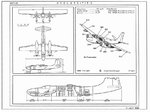Thanks again. Do you know something about historic bomb-runs made by B-25/26, that involved greater range, against, say, a 500-miles distant target and return to same base? Was the 2000 LB bomb ever used on the P-38s, the racks being allowed to carry those?
The P-38L with 300 gal drop tank offers some interesting numbers. After allowance (60 gals for warm-up, taxi, take off to 5000 ft) was accounted for, and with one drop tank (another is replaced with a bomb), it was capable for 1510 miles of range with 650 gals (ie. 300 gals in a DT and 350 gals internal; balance of 60 gals used as allowance). That's how they reached Ploesti (1000 lb bomb on another rack). The 300 gal drop tank (full) weighted 1887 lbs.
Seems like this one has both flexibility and range?
View attachment 248146
The first missions carried out by B-26 Marauders involved the 22nd BG carrying out raids on Rabaul, staging from airfields around Townsville, Australia via Port Moresby: 22nd Bomb Group - The Red Raiders
The distance from Townsville to Port Moresby is 676 miles - refuel Port Moresby; to Rabaul is then about 500 miles direct. AFAIK these were the longest missions carried out by B-26s. 2,000 lb bomb load + 1,212 gal fuel, including a 250 gal tank in the rear bomb bay.
Last edited:

